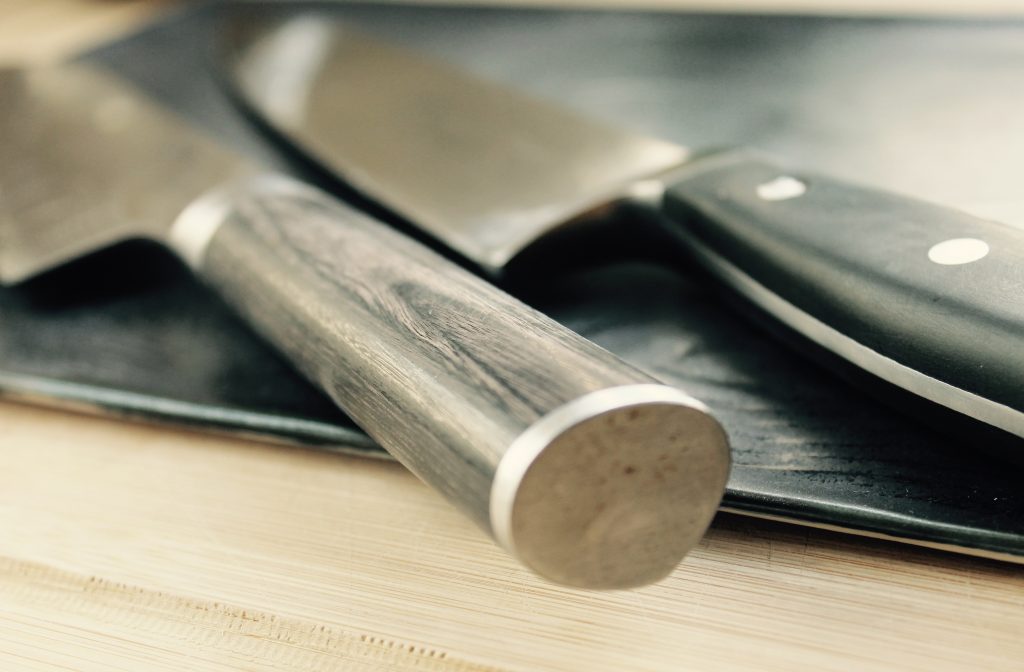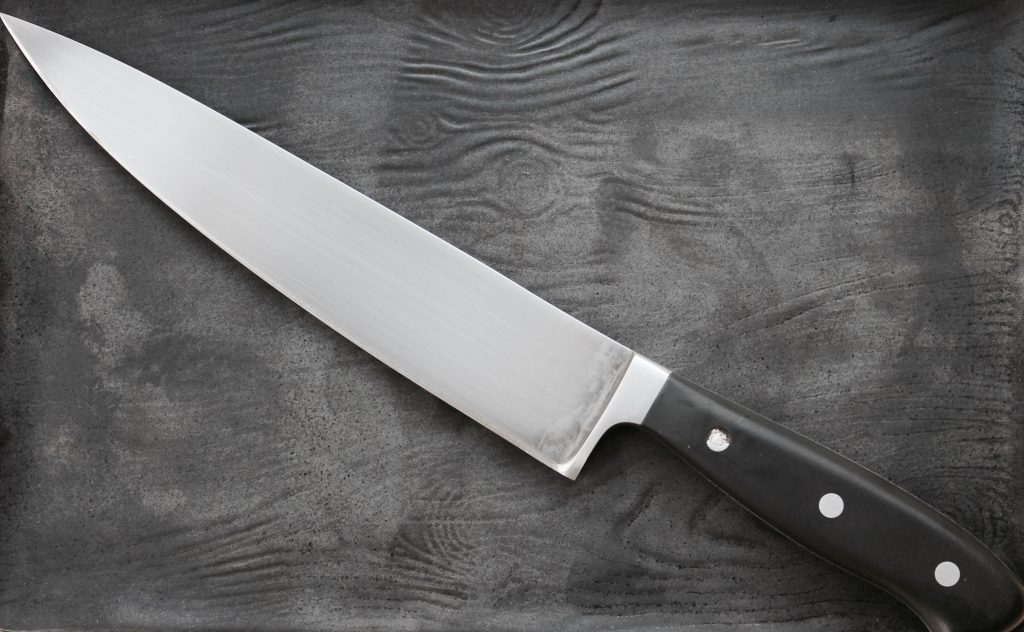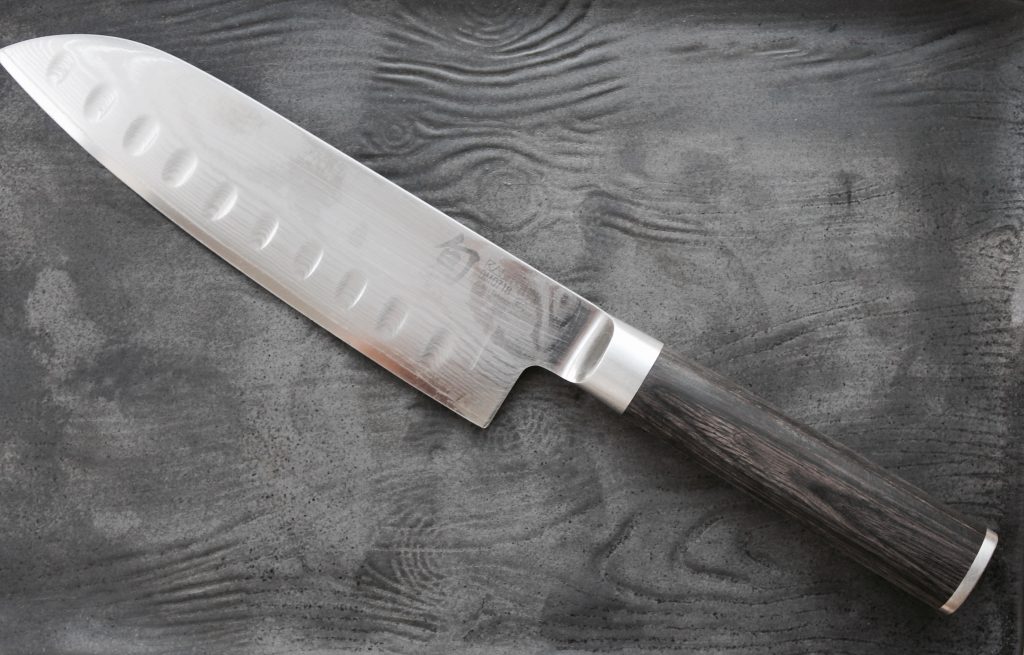

I need to make a confession: I have a fetish for chef knives. I love the way a good chef knife feels in my hand and the strange sense of power it gives me. Before I get too intimate here, let me just say this: a chef knife is your most important ally and your best friend in the kitchen.
When I’m invited to people’s homes, I sometimes like to sneak and spy in their kitchen. I often see amazing kitchens equipped with high-quality, expensive appliances and kitchenware. The dream kitchen of any home cook. Paradoxically, I’ll find in the same kitchen a set of countless cheap, dull knives, most of them not being used at all, and the ones that are have little value.
So, why is a good chef knife the most important tool in your kitchen?
Because a chef knife is the one you’re going to use for 95% of all knife activity in the kitchen. A huge part of cooking is basically transferring raw food ingredients into cookable and edible forms, meaning cutting, slicing, chopping, and dicing. For most of these activities, all you really need is a good chef knife. A good quality chef knife (and I’ll explain what that means) is indispensable. If you plan to take cooking more seriously, and you want to prioritize how you equip your self in doing so, a chef knife is your number one priority.
German vs. Japanese
Generally, there are two schools of chef knives: German and Japanese.
When I went to cooking school and started working in restaurants, my companion for many years was a German F. Dick knife
German knives, kind of like German cars, are heavy and solid. They are thicker than Japanese knives, and you’ll notice that you’re holding more metal in your hand.

The metal blade starts from the tip and ends in a bolster, which is a thick piece of steel located before the handle. The bolster and the thickness give you the feel of stability and safety.
German-style knives have more curve to their belly—the sharpened edge—a blade shape that dictates the typical rocking, cutting motion.
German knives are made of softer steel than their Japanese counterparts, and this is where I see their biggest disadvantage. Softer steel means that the knife gets dull much faster and requires much more frequent sharpening. In my experience with German knives, they work great when “freshly” sharpened, However, in less than a month of average use, they get dull. Unless you sharpen them again, you’re holding a heavy, useless piece of steel.
On the other hand, the German weight, thickness and stability are great for cutting hard vegetables like pumpkin or hard yams, or for carving meat pieces with bones.
I’ve started using a Japanese-style knife, also known as Santoku, only recently, and I have to say that I’m in love. Think about a broadsword vs. a Samurai sword. The knife is thinner and feels much lighter in your hand. Japanese-style chef knives don’t have the bolster like the German ones, so your hand is closer to the blade. This gives you a greater sense of control.

When it comes to accuracy and performing more delicate slicing—like thin tomato slices or paper-thin fish slices—the Japanese knives are hands-down superior to the German. A Japanese knife will be much more responsive to your needs in terms of the exact size you want the piece of food to be. When kept in optimal condition, its blade is sharper and more obedient. Also, the lighter weight of the Santoku puts less strain on your hand and will not tire you out as fast as the German one.
Since the Santukos have a more linear cutting edge, they require a different cutting technique that relies less on rocking motion and more on a downward cut.
Unlike the German knives, the Japanese have a higher degree of hardness, which means a sharp knife for a much longer time. Some say the downside here is that Japanese knives break more easily when falling on a hard surface and are harder to sharpen. I personally think that a long-lasting, sharp blade far exceeds those down sides.
Some recommended German style brands are Zwilling, F. Dick, and Wusthof.
Japanese known brands are: Global, Shun, and Korin.
It’s All About The Quality
The debate of German vs. Japanese can be a long one, and online research will reveal knife geeks with opinions all over the place. At the end of the day, it’s a matter of personal preference. I do most of my work with a Shun Santoku
which is a more modern-style Japanese knife—a hybrid, if you like. It has a bit of a curve, unlike traditional Japanese-style knives, and that allows me to use more rocking motion when I want to.
For heavy-duty tasks like cutting through the hard skin of raw butternut squash, or cutting through chicken bones, I’ll use German knife.
Whether you prefer the German or the Japanese, the most important thing is the quality of the knife. A good, quality knife—regardless of what style—will do the work fine and will last for years.
When it comes to price, a good, entry-level knife should cost $80-$120. Of course, you can find cheaper ones, but I wouldn’t recommend compromising here. A good knife will be one of the best investments you put in your kitchen.
Make sure the knife feels good in your hand. The knife should feel natural—almost like an extension of your hand. That’s why I wouldn’t recommend buying knives online. Go to a kitchenware store and try different kinds of knives.
Don’t Buy Knife Sets
This is the most common trap people fall into. Marketers obviously want you to buy as many knives as possible. This is why they’ll convince you that you need a different kind of knife for each specific cutting activity. A knife for meat. A knife for fish. A knife for slicing and one for carving. The list goes on and on. In reality, you end up with a bunch of medium-to-low quality, useless knives that you don’t know what to do with, other than maybe decorating your counter top.
I like to take the minimalist approach here. Instead of investing $250 in a set of 10 mediocre knives, buy one amazing chef knife and a really good paring knife, and you will get more by spending less. Sure, if you find yourself spending more time in the kitchen and feel the need for a certain, specialized knife, buy it. But most people, including myself, do great with just a chef knife that performs the majority of tasks perfectly—as long as it’s a high-quality, well-kept knife—and a good paring knife.
You and your chef knife will form a long-term relationship, and you want to make the best choice you can from the very beginning. I still have the old F. Dick knife that I bought 15 years ago in my cooking school days, and I still use it. I admit it’s not what it used to be, and it lost a significant amount of metal after countless sharpenings. Along the way I gathered newer, sharper knives.
But you’ve got to have respect for old friends.
- I only recommend products that i 100% believe in. Any product that you’ll purchase using the amazon link above will help me support my blog as i am a part of the amazon affiliate program.



